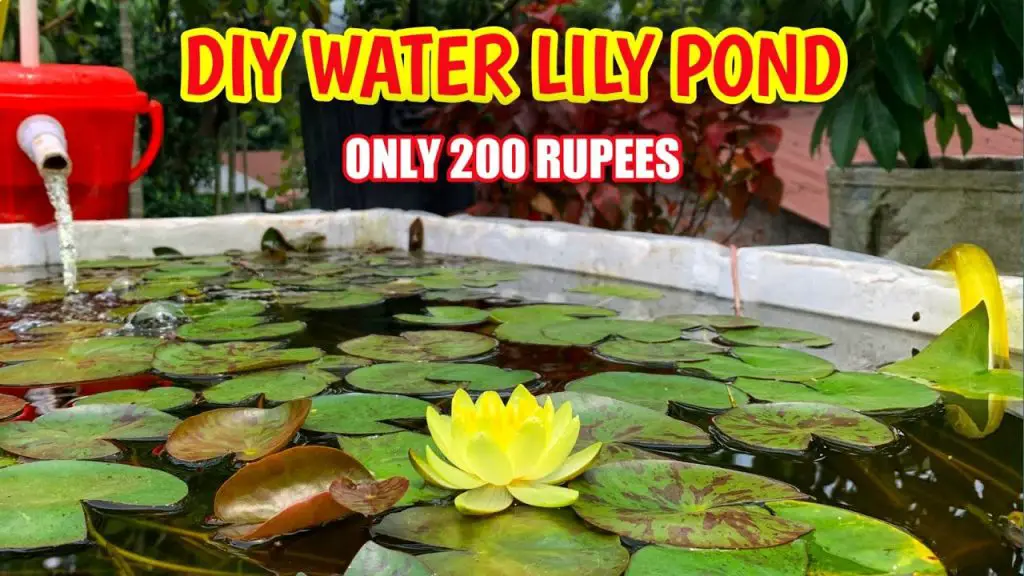Building a water lily pond can be a rewarding and serene addition to your outdoor space. The elegance of water lilies floating on the water’s surface can create a tranquil and picturesque atmosphere, making your garden a place of beauty and relaxation. In this comprehensive guide, we will walk you through the step-by-step process of building your own water lily pond, from planning and design to maintenance tips for a thriving aquatic habitat.
Planning and Design
Before you start digging, it’s essential to carefully plan and design your water lily pond to ensure its success. Consider the following factors:
1. Location: Choose a spot in your garden that receives at least 6 hours of sunlight per day, as water lilies thrive in full sun. Ensure that the area is away from trees to prevent falling leaves from accumulating in the pond.
2. Size and Depth: The size and depth of your pond will depend on the number of water lilies you intend to plant. A depth of 18 to 24 inches is ideal for most water lily varieties.
3. Shape: Determine the shape of your pond based on the available space and your aesthetic preferences. Common shapes include round, oval, and kidney-shaped ponds.
4. Water Source: Consider how you will fill and maintain the water level in your pond. A nearby water source, such as a garden hose or rainwater collection system, will be necessary.
5. Safety: If you have young children or pets, consider adding safety features such as a fence or barrier to prevent accidents.
Excavation and Pond Construction
Once you have a clear plan in place, it’s time to start building your water lily pond. Follow these steps to create a beautiful aquatic habitat:
1. Mark the Pond Area: Use a garden hose or spray paint to outline the shape of the pond on the ground. This will serve as a guide for excavation.
2. Excavation: Begin digging within the marked area, removing soil to the desired depth. Use a shovel or a small excavator for larger ponds. Keep the sides as vertical as possible to prevent collapse.
3. Lining the Pond: Once the excavation is complete, line the pond with a durable pond liner. Ensure that the liner extends over the edges of the excavation to create a secure barrier for holding water.
4. Add a Underlayment: Before adding water, it’s important to lay an underlayment over the pond liner to protect it from punctures by rocks or roots. This will help ensure the longevity of your pond.
5. Filling the Pond: Fill the pond with water, using a garden hose or a nearby water source. As the water level rises, adjust the position of the liner to prevent any stretching or tearing.
Installing a Filtration System
A proper filtration system is crucial for maintaining water clarity and quality in your water lily pond. There are several types of filtration systems to consider:
1. Mechanical Filtration: This type of filtration removes debris and particles from the water, typically through the use of a filter pad or sponge.
2. Biological Filtration: Biological filtration encourages the growth of beneficial bacteria that help break down organic waste and maintain water quality.
3. Pump and Circulation: A submersible pump will help circulate the water, preventing stagnation and promoting a healthy environment for aquatic life.
4. UV Sterilizers: UV sterilizers can be added to control algae growth and maintain water clarity.
Adding Water Lilies
With the pond in place and the filtration system installed, it’s time to introduce the star of the show – the water lilies. Follow these steps to plant your water lilies:
1. Selecting Water Lily Varieties: There are numerous varieties of water lilies available, each with its own unique characteristics. Choose a selection of colors and sizes to create visual interest in your pond.
2. Planting Containers: Water lilies can be planted in containers filled with aquatic soil or clay. Choose containers that are large enough to accommodate the root system of the water lilies.
3. Positioning the Containers: Place the planted containers in the desired locations within the pond, ensuring that they are at the recommended planting depth for each variety.
4. Fertilizing: Consider using aquatic plant fertilizer tabs to provide essential nutrients for healthy growth and vibrant blooms.
5. Submerging the Containers: Gently lower the planted containers into the water, allowing the lily pads to float on the surface while the roots extend into the soil at the bottom of the pond.
Maintenance and Care
To ensure the long-term health and beauty of your water lily pond, regular maintenance and care are essential. Here are some tips for keeping your pond in top condition:
1. Water Quality: Monitor the water quality regularly using a test kit to ensure proper pH, ammonia, and nitrate levels.
2. Trimming and Pruning: Remove any dead or decaying foliage from the water lilies and trim overgrown pads to maintain a tidy appearance.
3. Fertilization: Replenish aquatic plant fertilizer as needed to support the growth and flowering of your water lilies.
4. Control Algae: Keep algae growth in check by maintaining a balance of sunlight, nutrients, and proper filtration.
5. Winter Care: In colder climates, consider installing a pond heater or moving the water lilies to deeper water to protect them from freezing temperatures.
Enhancing the Pondscape
Beyond the water lilies, there are many ways to enhance the overall aesthetic appeal of your pond:
1. Fish and Wildlife: Consider adding fish such as koi or goldfish to the pond, as they can contribute to the ecosystem and add movement and interest.
2. Water Features: Install a fountain, waterfall, or bubbling rock to introduce the soothing sound of flowing water to your pond.
3. Landscaping: Surround the pond with lush vegetation, rocks, and boulders to create a natural and harmonious pondscape.
4. Lighting: Illuminate the pond with underwater or landscape lighting to enjoy its beauty during the evening hours.
Conclusion
Building a water lily pond is a fulfilling endeavor that can bring a sense of tranquility and natural beauty to your outdoor space. By carefully planning and designing your pond, installing an effective filtration system, and providing proper maintenance, you can create a thriving aquatic habitat for water lilies and other aquatic life. With the right care and attention, your water lily pond will become a captivating centerpiece in your garden, offering a serene retreat for relaxation and enjoyment.





